Giant trees and mountain vistas in California
Just driving into California’s Yosemite National Park will leave you breathless owing to the beautiful landscapes. If you choose to hike, you may also find yourself a little breathless due to steep sections of trail, but also the altitude. Some parts of the park are more than 3000 metres high!
The best introduction to the park is via the Tioga Road. It can be reached from the east or west entrance to the park. The Tioga Road goes up to 3000 metres at its highest point and is California’s highest vehicle pass. The first part of the 39 mile Tioga Road was constructed in 1883. The second part was built in 1910. The mountain road takes you through the middle of the park past mountains, scenic outlooks, winding rocky roads and meadows. You can stop to take in the view, or even take a break along the way and do some of the many trails.
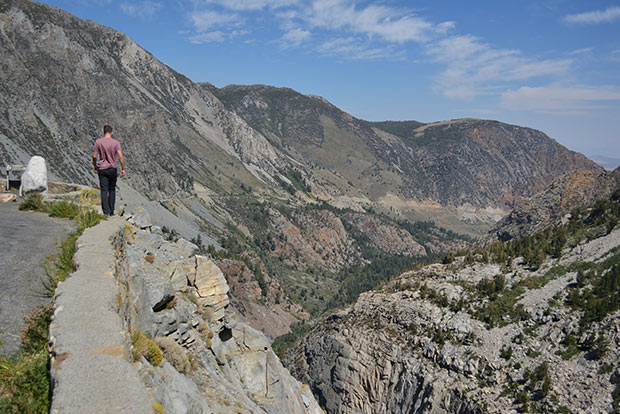
Trails in Yosemite National Park range from easy to hard, so there’s something for everything with lots of trails to choose from. One of the most spectacular trails that is especially bang for buck is the 3.5km return Taft Point hike.
Taft Point is located off Glacier Point Road. For a sampler of what you’re about to hike to, drive to the end of the road to Glacier Point Lookout for sweeping views across the mountains including the park’s iconic Half Dome, and 3,200 feet in the valley below. About 3.5km before Glacier Point is the trailhead for the Taft Point and Sentinel Dome hikes. Taft Point goes to your left and finishes at a vertigo-inducing cliff. If you’re scared of heights, this may not be the hike for you. The hike is easy to moderate with only a couple of short steep sections.
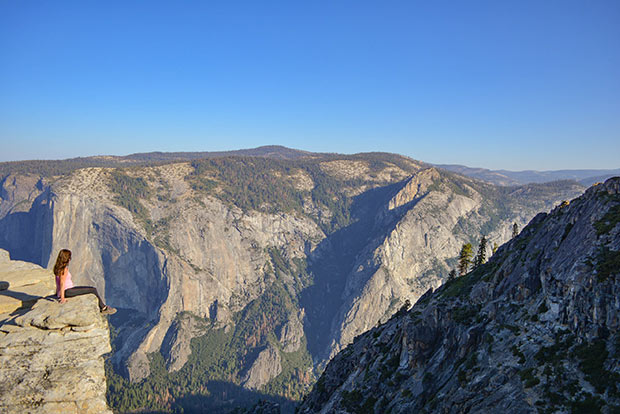
The trail on your right from the trailhead goes to Sentinel Dome. This hike is a little harder than Taft Point but you’ll get views of Yosemite’s most famous peaks including Half Dome and El Capitan, as well as Yosemite Falls if they’re flowing at the time.
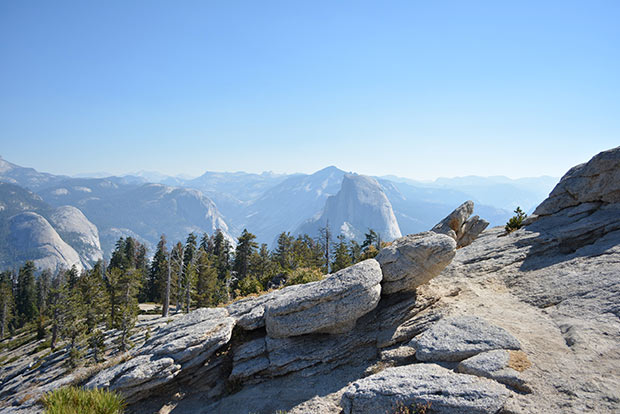
The trail is a gentle ascent before you climb up to the top of the Dome. You can also continue on to Glacier Point from Sentinel Dome. Many of Yosemite’s star attractions can be found in the well-trafficked Yosemite Valley.
Trailheads for Half Dome, Bridal Veil Falls and Vernal Falls start here. Yosemite National Park not only has mountains or peaks to climb – you can also explore the meadow areas such as Tuolumne Meadows.
Sequoia/King’s Canyon National Parks
The Sequoia/King’s Canyon National Parks are joined at the hip, and you get two parks for the price of one. The parks are located south of Yosemite National Park. In King’s Canyon, there’s a multitude of trails. My road trip buddy and I opted for the Big Baldy trail – about a 7km round trip up to a lookout point over the park.
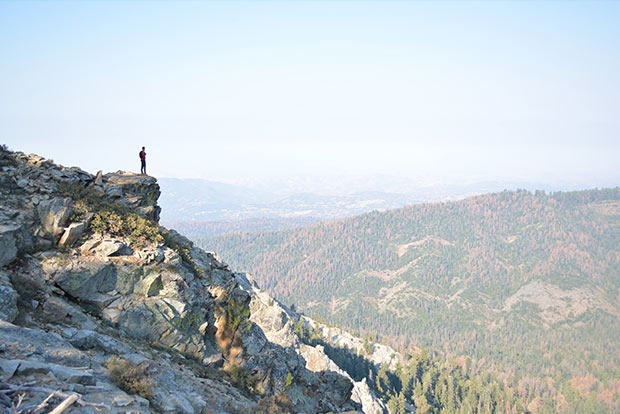
We also visited the Big Stump Trail – exactly as it sounds. Stumps of giant sequoia trees cut down for timber. There’s even a big stump with a ladder leading up to it, so you climb to the top.
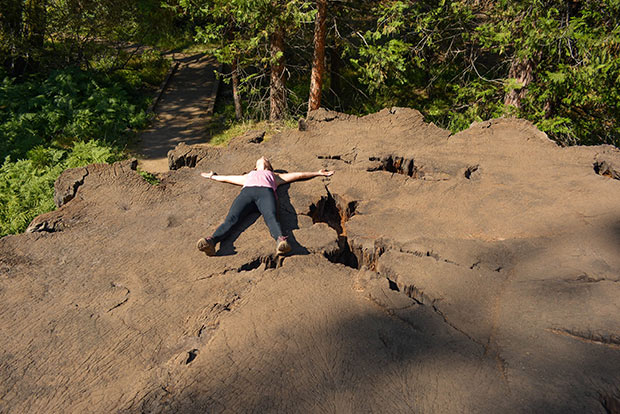
Sequoia is the big ticket item though with forests of giant sequoia and the 84 metre General Sherman Tree – the biggest tree in the world by volume. The General Sherman Tree is estimated to be more than 2,200 years old, and it measures 40 metres in circumference at its base.
The size of the trees in the Giant Forest has to be seen to be believed. You can’t get a real sense of how big they are until you stand right next to them.
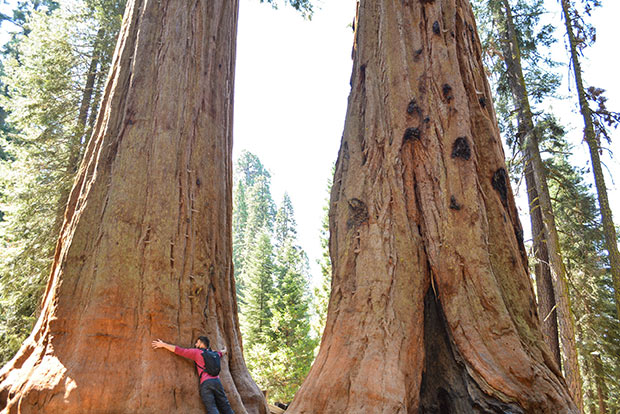
Not far from the General Sherman Tree is the trailhead for Moro Rock. It’s a steep hike up 400 steps to the top, but you’ll get great views across the park.
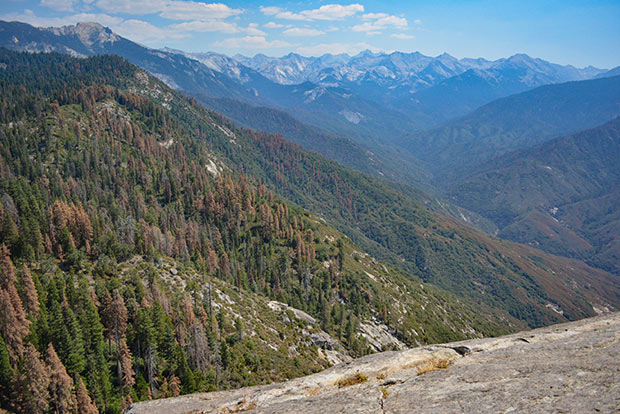
There’s also plenty of other trails across both park areas. Trails range from easy to hard, and many hikes branch off from the General Sherman Tree in the Giant Forest.
Things You Should Know:
- The US is built for outdoor adventurers, and there are campgrounds aplenty in national parks. The most popular campgrounds in Yosemite are located in the tourist playground of Yosemite Valley. You’ll need to book well in advance to secure a spot during the summer months. Many campgrounds at Sequoia/Kings Canyon offer campsites on a first come, first served basis so you’ll have a good chance at rolling up on the day and grabbing a site.
- Yosemite National Park can get very busy in the summer months. Be prepared for crowds in Yosemite Valley or start your hikes early. Shuttle buses also operate to ferry people from the main parking area in Yosemite Valley to trailheads to try and minimise congestion in the carparks.
- Yosemite’s Tioga Road is only open from late May until around November.
- Permits are required to hike Half Dome and must be reserved in advance. Numbers are limited so get in early or you will miss out.
- If you can’t get up to Half Dome, you can get excellent views of it from the Sentinel Dome trail or also from some of the bridges located in Yosemite Valley.
- The cost to enter Yosemite National Park is $US30 which allows entry into the park for one to seven days. Admission to Sequoia/King’s Canyon parks is a combined ticket for $US30 also. If you’re visiting more than one park during your visit to the US, you may want to consider investing in an annual pass for $US80 which allows entry into USA’s federal national parks for 12 months.
- West California is bear country, and there are bears in Yosemite, Sequoia, and Kings Canyon national parks. It’s not recommended to leave food in your car and keep backpacks etc. out of site as bears know what items may contain food. Instead, beer proof storage boxes are provided across campsites and at some trailheads in Yosemite, Sequoia and King’s Canyon National Parks. For locations, ask at the Visitor Centres of each park.
Lisa Owen is a pint-sized Australian following her dreams to travel to as many places as she can, and loves to share her photography, travel hacks, hiking adventures, and food discoveries along the way. At last count, she has travelled to more than 40 countries in between working in public relations and discovering hidden gems in Australia's great outdoors. Instagram: @_thelittleadventurer Facebook: The Little Adventurer Australia
The views, opinions and positions expressed by the author and those providing comments are theirs alone, and are meant as travel inspiration only. They do not reflect the opinions of Cover-More Insurance. You should always read the PDS available from your travel insurance provider to understand the limits, exclusions and conditions of your policy and to ensure any activities you undertake are covered by your policy.